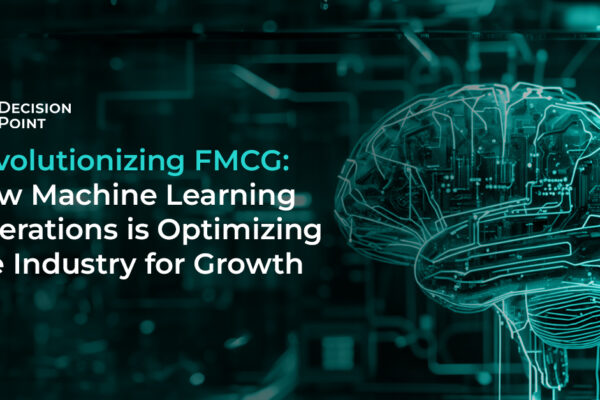Being CIO in the Pandemic – A satirical take on the challenges CIOs face
Four Questions that a post-pandemic CIO must be asking themselves.
The ‘C’ in CIO stands for Chief Courageous.
Let’s decode some of the most concerning challenges faced by CIOs since the pandemic started; how successful CIOs are tackling the same and shaping the future of work. Let’s ask a few questions that lead us to answers we need to know –
Question 1: What is the real factor(s) preventing quick and simple digitization of processes in the pandemic – Difficult People or Difficult Technologies?
The multiple waves of covid19 have hit the entire institution of conventional work models pretty hard, to say the least. Meetings are not the same anymore, trust is not obvious any longer. 2020 was about figuring out short-term ways to help people connect and collaborate. Automation has been one of the top priorities for IT leaders to smoothen operations. While there have been a lot of investments in this space, driving adoption remains a challenge. Is it because of resistance from people or the complexity of technologies?
The need is to understand and analyze what technology will cater to people’s demands at scale.
Automation is a beautiful promise that comes with a hefty price – CIOs need to evaluate the trade-off between ‘value with it’ and ‘value without it’.
For example – A big pharmaceutical company deployed a B.I tool meant to enable employees to track sales performance and make effective sales and marketing decisions. Given the amount of time it took to publish reports and the complex structure of data charts, they found it easy to share WhatsApp screenshots of numbers. Automation, at what price!
Beagle Insights – CIOs need to plan and invest in technologies that hold long-term value. You can’t spend on willy-nilly technologies. They need to enable businesses to implement no-code and low-code solutions that bring down costs with a promise of adoption and innovation.
Question 2: Who to blame for low data adoption in the remote workforce – Immature Data or Immature systems?
Jim, a Sales Rep at a global consumer goods giant, calls up one of his customers to check on SKU performance and update them on the latest products launched by the company. The customer has a few concerns. Jim asks them to stay on the call, while he checks the numbers with his colleagues. It’s been 2 days and Jim still doesn’t have all the answers. Guess what, the customer is not on the call anymore! I guess that was a no-brainer!
The pandemic has necessitated the need to be connected with relevant data and information.
We blame the data, but we condone our system’s preparedness to support the use of data.
The real question is – How mature are your data strategy activities?
“The level of maturity is very low. The desire to reach maturity and the investments behind that is rising, but the ability to formulate a great plan and act upon that plan is really low.” – Peter High, Strategic Advisor to many Fortune 500 companies.
Beagle Insights – CIOs have the responsibility to build sophisticated systems that add to the maturity of data. Invest in tools and technologies from a long-term value perspective. Evaluate technologies from a system perspective – how will your end-user interact with it? Work with other groups of CXOs in the company to nurture systems that empower people and technology.
Question 3: What’s needed to be ready for the ‘next normal’ – Restructuring of business or Restructuring of ageing operational models?
Remote working is not even remotely easy, let’s put it that way. It has impacted the way employees, customers, and stakeholders experience the brand.
In a survey, CIOs polled on the changes that they perceive are driving significant shifts in their organizations post the pandemic. Customer changes appeared to be one of the most alarming challenges as CIOs navigate through the pandemic. “A wave of reorganizations of both the business (40%) and IT itself (37%) are also major factors causing disruption both in operations and in the ROI of IT.” – The_CIO_Outlook_2021 – Constellation Research.
The question is – are we doing enough to break the stereotypical ways of functioning and empowering people to quickly adapt to accept and thrive in the new normal? Business restructuring is not enough, we must modernize the ageing legacy systems of operating at the workplace – Modern operating systems that require technologies to adapt to the needs of people than the other way round!
Beagle insights – Rethink Operating Models, Rebuild ecosystems.CIOs need to expand the scope of technology and invest in building ecosystems that help organizations maximize the value from remote work experience. The modern CIO is a people’s person who is collaborating with technology to make for a better remote working experience.
Question 4: What’s the real fear when it comes to IT Investments in the pandemic – Limited Budgets or Limited Coverage?
CIOs in the pandemic are wary of unplanned and unprecedented IT investments. ‘The sustainability of the vast investment made in the past few months is likely to be one of the most pressing themes for CIOs in the months to come’, according to Steve Bates, Global leader of KPMG’s CIO Center of Excellence.
IT Decision Makers realize that ROI from technology initiatives is a function of usage, coverage, and sustainability.
What’s a better option from a digital transformation standpoint? – Investing in capital-intensive solutions that cover 20% of the audience or that cost less and cover 100% of the audience. We fall into the trap of buying technologies that everyone else is buying. Understand what your audience needs, understand do you need all aspects of technology that you are investing in, understand if your audience is ready to use this solution? If not, why waste money and limit your budgets?
Beagle Insights – Invest in science that delivers savings through technology. At the end of the day, the role of a CIO is to be able to sit across the board and help the room understand why a particular investment must be made, what value it will bring and how it will facilitate necessary communication across the enterprise.
Invest to empower your Social Capital. Deliver ‘value’ at scale. Shape the future of work.
For more CIO insights, get in touch. Email us at beagle@decisionpoint.in






